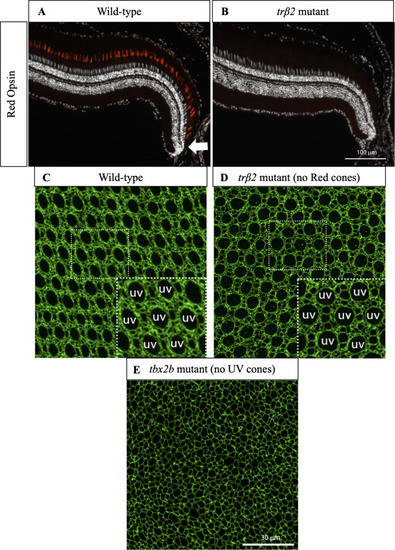Fig 6
- ID
- ZDB-FIG-210113-121
- Publication
- Nunley et al., 2020 - Defect patterns on the curved surface of fish retinae suggest a mechanism of cone mosaic formation
- Other Figures
- All Figure Page
- Back to All Figure Page
|
(A) Cross-section of wild-type retina in which immunostaining of Red cone opsin labels Red cones. White arrow indicates approximate location of precolumn area [ |
| Fish: | |
|---|---|
| Observed In: | |
| Stage: | Adult |

